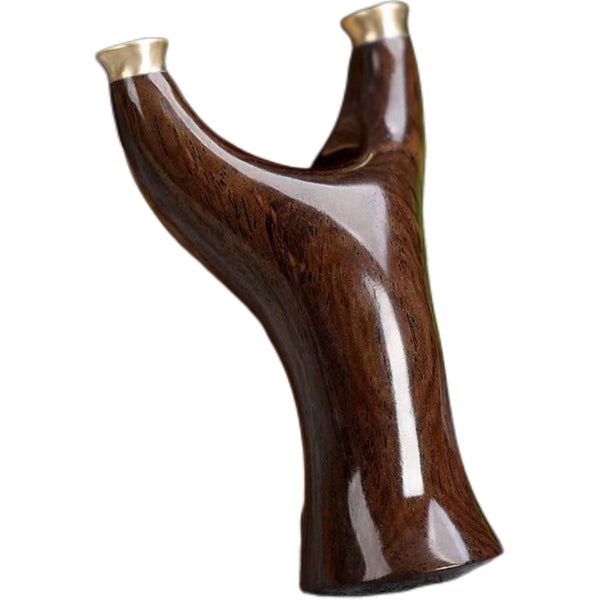Discover the rich tapestry of slingshot traditions worldwide, from ancient archaeological origins to Indigenous craftsmanship, regional games, and contemporary international competitions. This ultimate guide delves into the evolution of slings and slingshots as tools for survival, play, ritual, and sport, offering insights for historians, enthusiasts, and cultural explorers.
Why This Guide is the Definitive Resource on Slingshot Traditions
While many online articles provide brief overviews of slingshot history or focus solely on modern uses, they often lack depth in cultural contexts, archaeological evidence, and global comparisons.
This guide surpasses them by integrating peer-reviewed research, ethnographic studies, artisan interviews, and the latest developments in slingshot sports.
Drawing from sources like Cambridge University Press, Wikipedia, and the WSA, it serves as an authoritative, one-stop reference for researchers, hobbyists, and content creators.
Whether you're exploring ancient sling artifacts or planning to attend a 2025 WSA championship, this article equips you with comprehensive knowledge.
TL;DR Summary: Slingshots evolved from prehistoric slings used for hunting and warfare. Cultures worldwide adapted them for craft, games, and identity, with modern sports like WSA events bringing global unity. Key regions include the Americas (Indigenous symbolism), East Asia (martial techniques), and Europe (classical lore). Prioritize safety, ethics, and sustainability when engaging with these traditions.

1. The Deep History of Slings and Slingshots: Archaeological Origins
The sling—a simple corded projectile weapon—predates the modern Y-shaped slingshot by millennia, with evidence spanning continents. Archaeological finds reveal slings as one of humanity's earliest ranged tools, crafted from natural fibers for hunting, warfare, and herding.
Prehistoric Evidence and Global Spread
Sling fragments from Lovelock Cave in Nevada, USA, date back to around 2,000 BCE, made from plant fibers like yucca or sagebrush. In Peru, coastal sites yield sling textiles from 3,000 BCE, used by Andean cultures for warfare and hunting. These artifacts, preserved in dry environments, demonstrate slings' efficiency: a skilled slinger could launch stones at speeds over 100 mph, rivaling early bows.
European sites, such as Balearic Islands slingstones from 1,000 BCE, highlight military use, as described in classical texts by Romans who recruited Balearic slingers for legions. In the Middle East, Biblical references (e.g., David and Goliath) underscore slings as symbols of ingenuity against superior force.

Key Takeaway: Slings represent human innovation in projectile technology, evolving from survival tools to cultural icons. Modern slingshots, invented in the late 19th century with vulcanized rubber, built on this foundation.
2. Regional Traditions: Cultural Adaptations of Slings and Slingshots
Slings and slingshots vary by region, shaped by local materials, social needs, and historical contexts. Here's a global overview, expanded with ethnographic details.
The Americas: Indigenous Craft and Symbolic Resilience
In Central and South America, Indigenous groups like the Boruca of Costa Rica craft wooden Y-fork slingshots from native hardwoods, decorated with motifs representing clan histories and nature spirits. Historically used for hunting birds and small game, these tools now symbolize cultural resistance, sold as artisanal items to tourists. Boruca artisans emphasize sustainable harvesting, blending utility with economic empowerment.
North American tribes, such as the Paiute, used fiber slings for herding and protection, with Lovelock Cave artifacts showing early adaptations. In modern contexts, slingshots appear in powwows as games teaching youth dexterity and patience.
East Asia: Martial Discipline and "弹弓术" (Tán Gōng Shù)
In China, slingshot traditions manifest as "弹弓术," a disciplined practice blending posture, breath control, and accuracy, often taught in community sports centers. Rooted in ancient throwing arts, it parallels archery in emphasizing mental focus. Modern adaptations include urban competitions, with events in Shanghai highlighting precision techniques.
Japanese and Korean variants use bamboo forks for pest control and games, influenced by bushido-like training philosophies.
Cultural Note: These practices underscore slingshots as tools for self-discipline, with recent 2025 events in Asia promoting youth involvement.
Southeast Asia and Oceania: Village Games and Resourceful Designs
Island communities in Indonesia and the Philippines use slingshots for fishing and crop protection, crafted from bamboo and rubber tree latex. Festival games involve accuracy contests, fostering social bonds. In Oceania, Polynesian and Australian Aboriginal groups fashioned slings from driftwood and vines, used in hunting and rituals. Aboriginal "woomera" (spear-throwers) share conceptual ties, emphasizing leverage.
Recent ethnographic studies highlight slingshots in climate resilience, as tools for sustainable foraging amid environmental changes.
Europe and the Mediterranean: From Classical Warfare to Folk Lore
Classical slings were military staples, with Balearic slingers famed for accuracy in Roman armies. Medieval Europe saw slings in peasant uprisings, evolving into folk games in rural areas. Today, historical reenactments in Spain and Greece revive sling techniques, with experimental archaeology demonstrating ranges up to 400 meters.
In the UK, 2025 Slingshot Federation events blend tradition with sport, drawing on this heritage.
Africa and the Middle East: Pastoral Tools and Symbolic Narratives
African pastoralists like the Maasai use simple slings for livestock protection, made from leather and acacia wood. In the Middle East, slings appear in ancient texts (e.g., Assyrian reliefs) and modern folklore, symbolizing resourcefulness. Biblical stories amplify their cultural significance, with contemporary Bedouin practices preserving herding uses.
Global Controversy: Colonial histories often suppressed Indigenous sling traditions, viewing them as "primitive." Modern revivals address this through cultural reclamation.
When and How to Replace Your Slingshot Bands: A Comprehensive Guide🛠️
3. The Craft of Slings and Slingshots: Materials, Methods, and Innovations
Crafting slingshots reflects local ingenuity, with materials evolving from natural to synthetic.
Regional Materials Comparison Table
| Region | Fork Material | Pouch/Cordage | Modern Innovations |
|---|---|---|---|
| Americas (Boruca) | Cedar/Wood | Leather/Fiber | Carved motifs for tourism |
| East Asia (China) | Bamboo | Rubber Tubing | Precision-cut for "弹弓术" |
| Southeast Asia | Bamboo/Rattan | Natural Latex | Eco-friendly adhesives |
| Europe | Yew/Hickory | Polyester | Matte finishes for sport |
| Africa/Oceania | Acacia/Driftwood | Leather/Vines | Sustainable sourcing |
Step-by-Step Craft Guide:
- Select a Y-shaped branch (e.g., hickory for durability).
- Carve and sand for ergonomics.
- Attach pouch (leather) and bands (rubber or fiber).
- Test for balance and safety.
Sustainability Note: With rubber production impacting rainforests, artisans increasingly use recycled materials, as seen in 2025 WSA initiatives.
4. From Games to Global Sport: Evolution and Competitions
Slingshots transitioned from play to sport in the 20th century. Informal village games in Southeast Asia involve target contests during festivals, teaching community values.
The World Slingshot Association (WSA) formalized this, hosting championships with categories like precision and field shooting. In 2025, key events include the ASF Asian Slingshot Championship (May 19-20), European Championship (July 27 in Belgium), and UKSA Competition (August 1 in Newark). WSA's 2025 World Cup in Shanghai emphasizes international unity, with rules governing knockdowns at 10 meters.
2025 Trends: Growing participation (over 5,000 athletes globally) and youth programs highlight slingshots as an accessible sport.

5. Social and Cultural Significance: Rites, Identity, and Resilience
Slingshots serve as rites of passage, teaching youth responsibility in cultures like Boruca or Maasai. Gender roles vary—often male-dominated in hunting but inclusive in games. In postcolonial contexts, they symbolize resilience against cultural erasure.
Economic aspects: Artisan sales in Boruca support communities, but globalization risks appropriation. Ethical tourism emphasizes fair trade.
6. Safety, Ethics, and Legal Considerations
Safety Tips:
- Use protective eyewear and check bands for wear.
- Avoid urban areas; practice in safe ranges.
Ethics and Legality:
- Humane hunting: Follow regulations (e.g., U.S. bans on certain projectiles).
- Cultural Ethics: Obtain permission for documenting Indigenous crafts; avoid commodifying sacred items.
- Legality: Slingshots are restricted in some countries (e.g., UK as offensive weapons); check local laws.
Optimizing Slingshot Band Performance: A Comprehensive Guide🎯
7. Researching and Writing About Slingshot Traditions: Practical Steps
For creators:
- Collect visuals with permissions (e.g., Boruca artisans).
- Interview experts (WSA organizers, archaeologists).
- Cite sources transparently.
- Include multimedia: Embed WSA videos or craft demos.
10. FAQ
Q: How old are slingshot traditions?
A: Slings date back to 3,000 BCE in Peru; modern slingshots emerged in the 19th century.
Q: What are major slingshot events in 2025?
A: ASF Asian Championship (May), European Championship (July), UKSA Competition (August).
Q: How can I ethically engage with Indigenous slingshot craft?
A: Seek permission, credit creators, and support fair trade initiatives.
11. Sources Appendix
- Wikipedia Sling (Weapon)
- Cambridge University Press - Lovelock Cave Sling
- Boruca Indigenous Traditions
- West Indigenous Trading - Boruca Crafts
- Bridge Chinese - 弹弓术
- World Slingshot Association
- YouTube WSA Events





























































